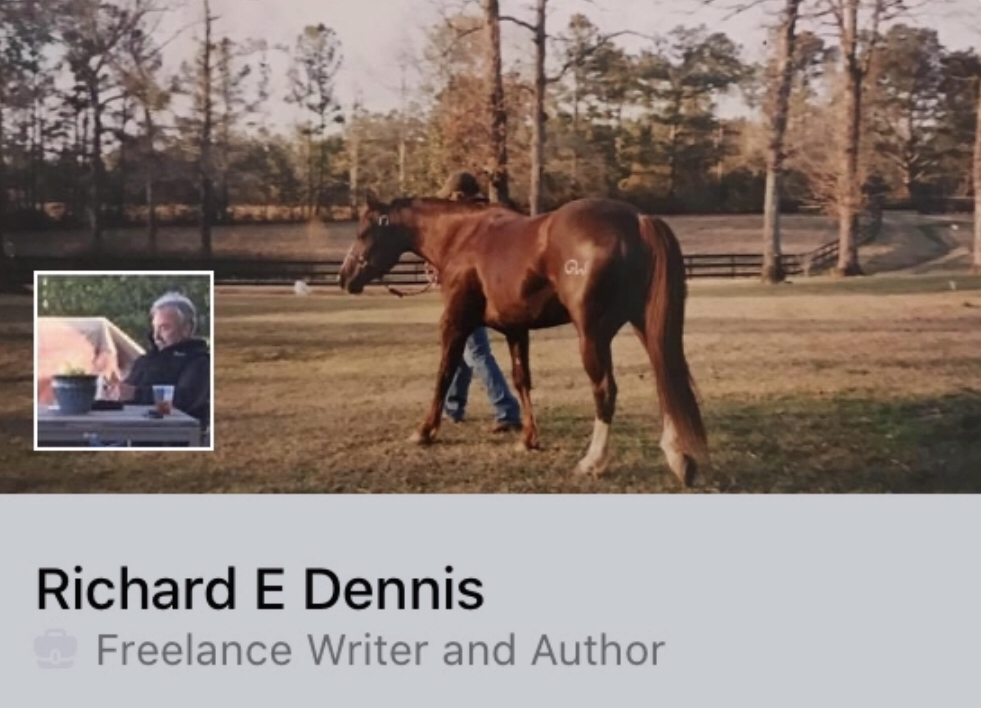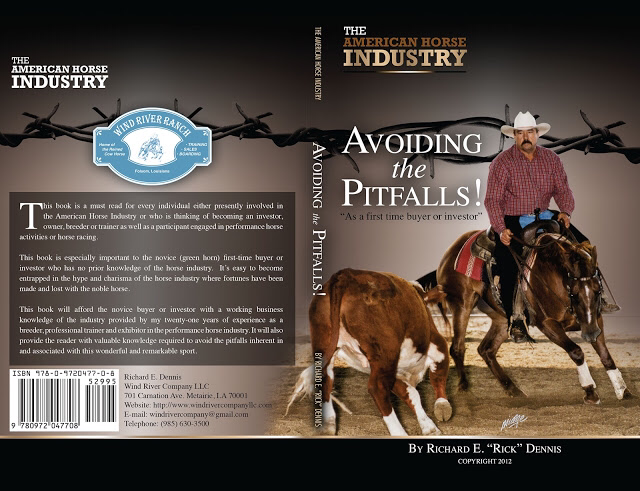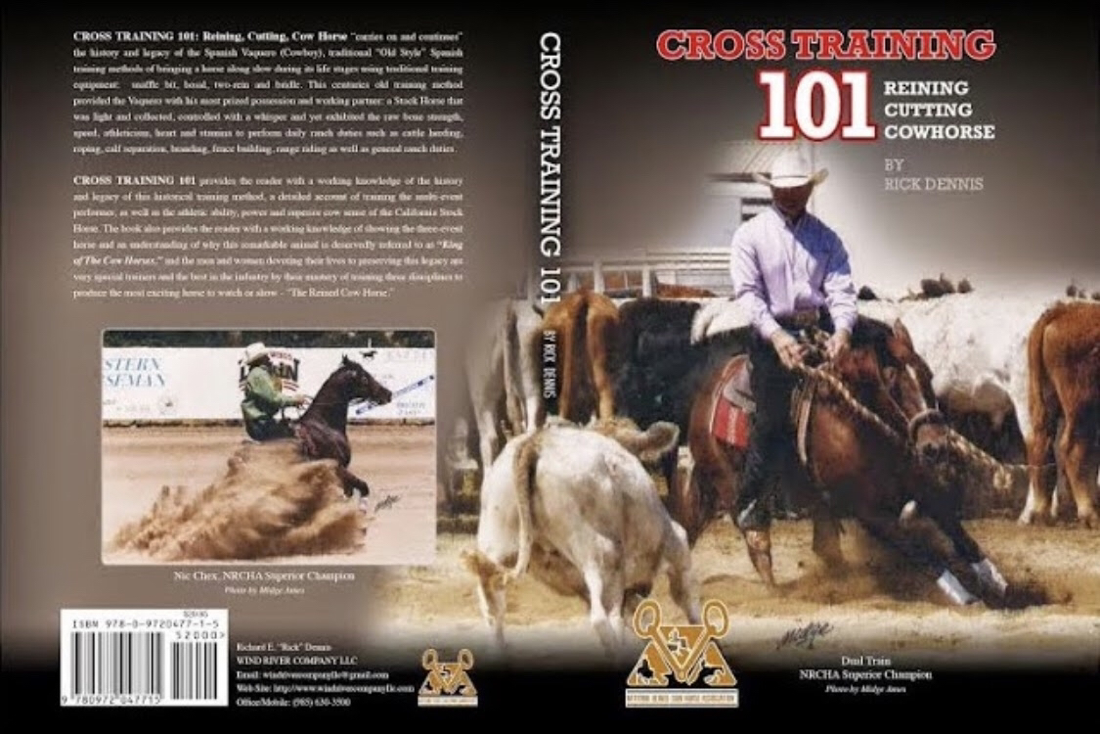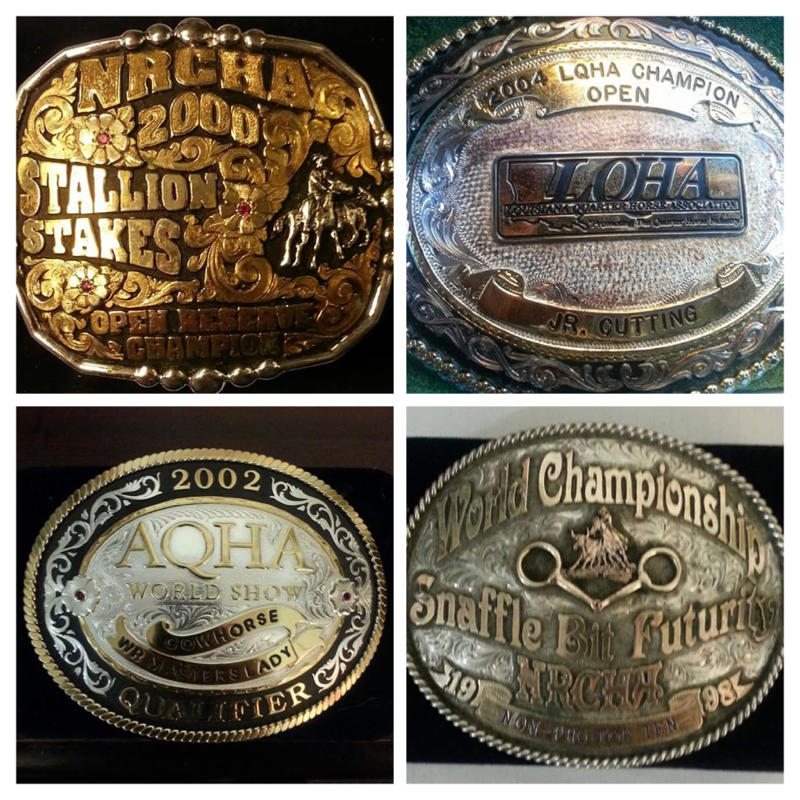|
MASTERING THE EXTENDED (LONG-TROT)
By Richard E. “Rick” Dennis CPP Freelance Writer and Author Pro Reined Cow Horse Trainer ©September 20, 2020 All Rights Reserved HISTORY OF THE REINED COW HORSE For almost 150 years, the reined cow horse was famous throughout California and into the West. In the early- to mid-19th century, the Gold Rush changed the complexion and future of California. The influx of newcomers into the Golden State helped to dissolve the vast cattle ranches of earlier days. The modern horse was reintroduced to the Americas by the Spanish Conquistadors. By the time the Spanish missionaries were making their way into California in the 18th century, the Spanish vaqueros (cowboys) were well established in other parts of America and came with them. Over time, the "California" cowboy or vaquero developed a system of training working cow horses that became famous for its elegance, precision, and difficulty of training the horse. The roots of these methods are in European dressage, a system to train horses for war. Adopted by the pre-Moors and Moors in Spain, and transferred to the Spanish conquistadors, the California methods created horses so sensitive to their riders' signals they were known as "Hair-trigger" or "whisper" reined horses. At the time, a finished reining horse (as it was called) required at least seven years to train: three to four years to train the basics in a snaffle bit and bosal (hackamore), then at least a year carrying the bosal and the high-ported spade bit (named for the spade-shaped port which was from 1-3" high) or two-rein which help the horse learn how to carry the bit, then several years refining techniques in the spade bit until the horse was a "made" reining horse. The training could not be done by just any California cowboy, and reining horses were valuable because of the difficulty of training and scarcity. A finished reining horse could be controlled and directed with minute movements of the fingers of the left hand, which hovered above the saddle horn. (Compare to the grazing-bit style of Western Riding developed in Texas, where reins are split between the fingers and the hand moves in front of the saddle, controlling the horse by neck reining.) Because of the potential severity of the spade bit, chains added to the ends of the reins to balance the bit in the horse's mouth, and knotted and braided rawhide reins which prevented the reins from swinging unnecessarily, even at a lope, the "made" reining horse seemed to run, stop, spin and handle a cow on its own, with little communication from its rider. THE FOUR GATES OF THE REINED COW HORSE During the breaking and training of the Reined Cow Horse, four gates are mastered consisting of - Walk, Trot, Extended (Long-Trot), and Canter (Lope). Each specific gate is used for a specific purpose in the life cycle of a Reined Cow Horse or Ranch Horse. Whether the horse is being used for gathering cattle, separating (cutting) calves from their moms during branding, checking fence, opening or closing gates, or checking pastures or water troughs the using horse must be capable of performing a myriad tasks, on any given day, and at any speed the task requires. It doesn’t make much sense for a ranch of show horse to only have two gates - run or walk. BENEFITS OF THE EXTENDED (LONG-TROT) At a walk a horse is relaxed. At a lope a horse is like a perpetual motion machine. It takes less effort and energy for a horse to maintain this gate, than it does at the extended or long-trot. An extended or long-trot simply means: The normal trot of a horse is extended, allowing the horse to extend its forelegs and back legs to complete an extension of the normal trot. This extension of the horses frame increases speed. At the extended (long-trot) the horse is required to use more musculature responses to accomplish this gate than it would at a simple walk, trot, or lope. With the requirement of using more musculature, the horse is able to build muscle tone more rapidly than it would either walk or lope gates. Therefore, the extended (long-trot) will leg a horse up faster and condition a horse faster than any other gate. Another benefit of the extended or long-trot is the horse can rapidly cover ground without exhausting itself, stop and swap directions with a blink of an eye when compared to other gates. The extended (long-trot) becomes an invaluable tool to the horseman, especially when working cattle or performing general ranch duties. Example, gathering or maintaining control of a herd of cattle on the open range or in a holding pen during calf separation at branding time. Still another benefit for using the extended (long-trot) is during the boxing portion of a Reined Cow Horse event where the horse and rider has to exhibit that it can maintain control of a single cow at the end of the arena. Which ever the case may be, the extended (long-trot) is an invaluable tool to the horseman for performing duties on a working ranch or for the exhibitor in either a Reined Cow Horse or Ranch Horse class in the show pen. SITTING THE HORSE DURING THE EXTENDED (LONG-TROT) Remember reining, is an off-chute of Dressage. The proper method to ride the maneuver is to choose one of three positions: Seated in the saddle which is the hardest, rising out of the saddle three or four inches, or learning to post. In order to start the maneuver, position your horse in a round pen, at a walk, and look down at the horses front leg closest to the round-pen fence. This is your diagonal. As the horses front leg extends forward you should be rising out of the saddle. As the horses front leg closest to the arena fence retracts, you should be returning to the seat of the saddle. If you practicing the maneuver correctly, your departure and return to the saddle should be in unison with the extension and retraction of the horses front leg which is closest to the arena fence. Also, if the maneuver is being performed correctly you’ll immediately know whether or not your on the correct diagonal and your ride will be smooth and collected. Eventually and with enough practice, you’ll immediately know whether or not your maneuvering on the correct diagonal. TEACHING AND MASTERING THE EXTENDED (LONG-TROT) The extended trot requires your horse to lengthen his frame and stride while increasing the suspension between footfalls. In other words, his hooves stay off the ground longer than they do during a working or collected trot. Increased speed is an incidental result of trot extensions rather than a goal. If you simply ask your horse to pick up his pace, he will not extend automatically. Even though the extended trot is faster, the pace of his footfalls does not increase. An excellent place to begin the horses training to extend his trot is in the round pen. Prior to implementing this training in the horses daily training regimen, the horse must be capable of head collection and is completely under control in the snaffle bit. It’s always best to practice this maneuver while negotiating the walk, trot, canter (lope) gates. After completely warming the horse up, begin the exercise while walking the horse around the round pen while ensuring the horse remains calm, cool, and collected. The training begins at the walk. While at the walk ask the horse to collect its head. After a bit ask the horse to maneuver into the next gate or the trot or jog. While at the jog keep the horses head collected. Next, ask the horse to increase its speed to extend its frame and front legs while maintaining the collection. Once I have the desired collection, I increase the horses speed by increasing my leg pressure on the horses rib cage. Once the horse is extending the trot and the desired extension is achieved I release the leg pressure, but I maintain leg contact with the horses rib cage. Also, I maintain a slight contact with the horses face to encourage the horse to maintain head collection. Once I’ve made a few turns around the round pen, I cue the horse into a lope, by applying more leg pressure, and lope around the round pen a bit. When I’m ready, I break the horse down to an extended long-trot, to a trot, and then down to a walk by applying the desired back pressure on the reins. Once at the walk I allow the horse to cool off a bit before I repeat the series of exercises. Remember, the main objective is to have the horse to remain relaxed at all times. A stiff jaw won’t get you anywhere during these maneuvers. One happening to be aware of is: Once the extended long-trot is achieved the horse is going to automatically move into a canter (lope), if allowed, and simply due to the fact: It’s harder for the horse to perform the extended (long-trot) than it is to canter (lope). The horse is just going to naturally take the path of least resistance. Another fact to consider is: DON’T get into a brawl with your horse over this maneuver. If your horse become rebellious, just break the horse down to a walk and start the maneuver all over again after its calm. Theoretically, I use the extended (long-trot) for two separate training exercises. 1) to work on my horses head collection by maintaining a little back pressure while driving the horse into the snaffle bit with the appropriate leg pressure, while refraining from causing the horse mouth discomfort, and 2) teaching the horse the extended (long-trot) while practicing all four gate transitions until the horse is operating calm, cool, and collected during gate transition exercises. Over-time, you’ll learn the extended (long-trot) is an invaluable tool in horsemanship. UNTIL NEXT TIME, KEEP EM BETWEEN THE BRIDLE
1 Comment
|
Archives
March 2021
Categories |




 RSS Feed
RSS Feed